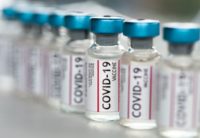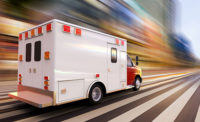In my early 20s, I was working as a laborer on a construction site when I heard a story about a worker who jumped into a trench without appropriate protection. He was suffocated and crushed within minutes. I was also told about another worker who was seriously injured when a jury-rigged clevis broke away from a crane cab and he plummeted to the surface below.
Not many people walk around throughout their day with a risk assessment in hand, unless of course it’s the one in their phone. We should, however, always have an informal risk assessment tool in our mind that allows us to perform at least a cursory assessment until we can dig deeper or in a more formal way.
The stories we learn
Each of us learn about hazards and risks through our personal experiences and those of others. And some of the stories we learn about have a lasting impact. Even more, we acquire related knowledge through reading, research, and training. But we also need to discipline ourselves and others to pay attention to the right things and continually scan our environments at work and away from it too.
Leaders and workers must continually enhance their personal sense of situational awareness; talking and walking themselves (and others) through an array of “what if” scenarios so that contact incidents and losses can be avoided and minimized.
The importance of scanning
Through experience, whenever I’m in an environment where trenching and shoring is of concern, I immediately scan further for situations that may present an elevated risk and first talk myself though abatement issues. If I’m around equipment where a clevis or connection can fail — I want to look deeper and ask questions regarding redundant forms of protection and eliminate high-risk single failure points.
Outside of work, I continually scan situations while driving, at home, or in social settings that may place people at harm for injury or loss. Over a period of three decades, I’ve developed a keen sense of awareness, just like many of you. The bottom line, scanning our environments is a very important leadership skill.
Some of this sounds a bit technical or commonsensical for some, but scanning our environments is an important leadership dimension that also has an emotional and organizational connection to specific hazards and risks. Assessing and analyzing everyday situations and asking important questions is what good leaders do.
Organizational dimensions
Is there a sense of purpose or mission before a job begins?
Are pre-job task briefings and risk assessment tools used with focus and rigor?
Do leaders observe and participate in regular risk assessments at the worker level?
Many organizations continue to perform work that has become comfortable, at a less than acceptable level, because failures or serious incidents have not occurred. In other words, there has been a normalization of deviation from safer work practices. Astute organizational leaders know that risks must be identified and controlled, daily. Risk assessments should categorize, identify, and control for those same risks. Analytics should be used to further aid in the monitoring of ongoing assessments. Engineering controls that eliminate or significantly reduce the risk would be the first step in abatement, while procedural controls may offer the least desirable form of risk reduction.
Sharing vs. protecting knowledge
Are you and your leaders paying attention to how openly people share their knowledge?
Individuals should freely share their knowledge regarding what is necessary to complete a job safely. But are some individuals protecting their personal knowledge as a point of political leverage? I have worked in several large organizations over the years where various specialists did not openly share their knowledge -- so they could be viewed as more valuable to the organization and protect their jobs from possible elimination.
Finally, is your near-miss reporting open and candid? It should reflect concerns that could be devastating if formidable change doesn’t occur.
Familiarity breeds blind spots
Does your organization value consensus building?
Leaders and their workers need to assess risks and arrive at some form of agreement regarding their potential harm. Are varied and differing opinions sought out so that a variety of cognitive biases don’t allow for important risks to be overlooked?
For example, your supervisor may not perceive a given risk as a “no-go” issue, but your most experienced and trusted worker does. Going further, is there a sense of urgency to improve and abate ongoing risks? Is there a deep sense of responsibility amongst workers to protect the health and safety of each other? And does your organization make time for fun and celebrate successes that relate to proactive contributions and improvements?
Archeologist Edward T. Hall once said that “real intelligence is about paying attention to the right things.”
Are you encouraging, even training your leaders and workers to pay attention to the right things and continually scan for hazards and the associated risks often overlooked by their familiarity?




